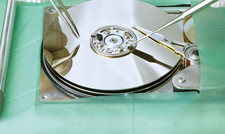Virtualizing complex Linux systems
It's Complicated

© Lead Image © Shawn Hempel, 123RF.com
If you are ready to migrate your hardware RAID system to the virtual world, standard virtualization and forensics tools are ready for the task.
Ever since the virtualization epidemic hit the datacenter, server filesystems have increasingly taken the form of images, and conventional partitions have been on the decline. The benefit for the admin is that the filesystem images are easier to move or manipulate.However, if you want to use physical disks – typically block devices named /dev/sd<x> or the like – in your own cloud, you need to convert them to suitable virtual disk image formats, such as .vdi or .vmdk.
Popular conversion programs, such as qemu-img --convert (for KVM), can convert your physical partition to a virtual form, but these tools are not designed to address complex situations. For instance, if you want to build a RAID system from multiple disks, you need to master a few tricks, and this article will help you do so. Incidentally, the approach described here relies on forensic tools, because I developed this technique while investigating a crime case. For virtualization, I will rely on VirtualBox [1] version 4.
Problems with RAID Controllers
Physical systems are not always easy to virtualize. For example, you can experience driver problems if the hard disks come from machines in which the RAID systems are managed by hardware controllers. Some tools do exist for simple scenarios. KVM offers a number of options for smoothing out the process. If you rely on VirtualBox, you can easily convert a hard disk /dev/sdb by using:
[...]
Buy this article as PDF
(incl. VAT)
Buy Linux Magazine
Subscribe to our Linux Newsletters
Find Linux and Open Source Jobs
Subscribe to our ADMIN Newsletters
Support Our Work
Linux Magazine content is made possible with support from readers like you. Please consider contributing when you’ve found an article to be beneficial.

News
-
Parrot OS Switches to KDE Plasma Desktop
Yet another distro is making the move to the KDE Plasma desktop.
-
TUXEDO Announces Gemini 17
TUXEDO Computers has released the fourth generation of its Gemini laptop with plenty of updates.
-
Two New Distros Adopt Enlightenment
MX Moksha and AV Linux 25 join ranks with Bodhi Linux and embrace the Enlightenment desktop.
-
Solus Linux 4.8 Removes Python 2
Solus Linux 4.8 has been released with the latest Linux kernel, updated desktops, and a key removal.
-
Zorin OS 18 Hits over a Million Downloads
If you doubt Linux isn't gaining popularity, you only have to look at Zorin OS's download numbers.
-
TUXEDO Computers Scraps Snapdragon X1E-Based Laptop
Due to issues with a Snapdragon CPU, TUXEDO Computers has cancelled its plans to release a laptop based on this elite hardware.
-
Debian Unleashes Debian Libre Live
Debian Libre Live keeps your machine free of proprietary software.
-
Valve Announces Pending Release of Steam Machine
Shout it to the heavens: Steam Machine, powered by Linux, is set to arrive in 2026.
-
Happy Birthday, ADMIN Magazine!
ADMIN is celebrating its 15th anniversary with issue #90.
-
Another Linux Malware Discovered
Russian hackers use Hyper-V to hide malware within Linux virtual machines.

